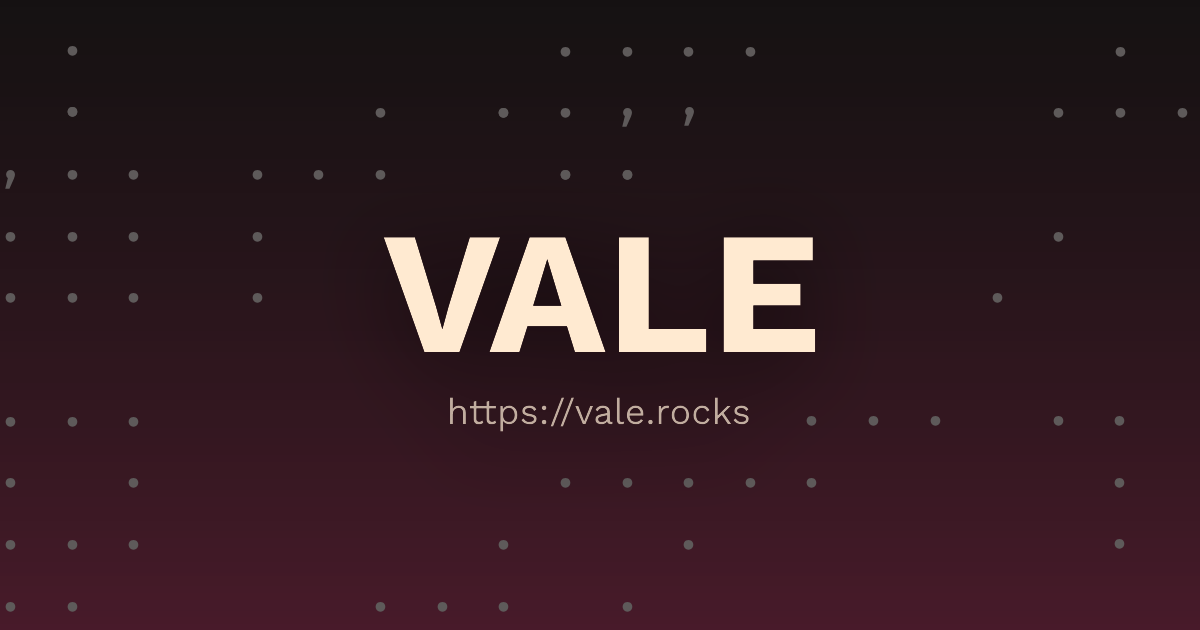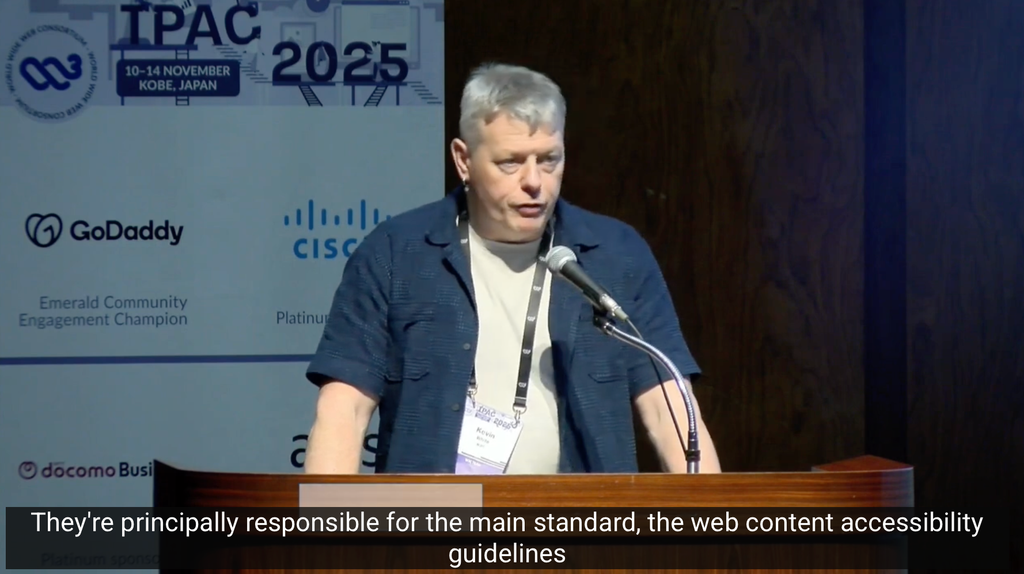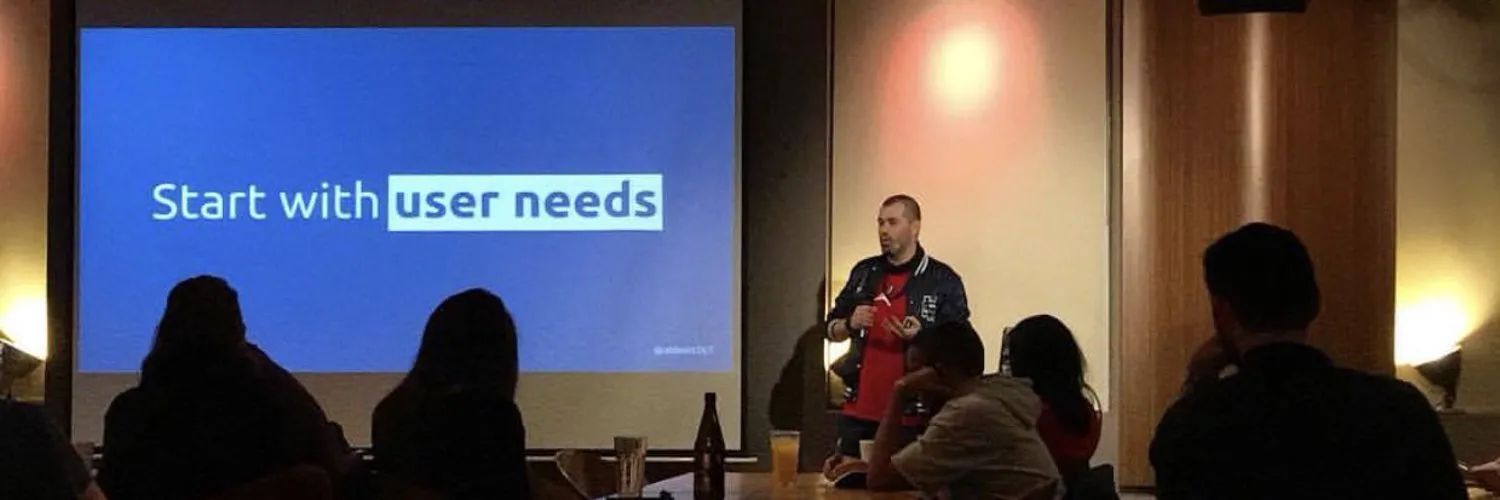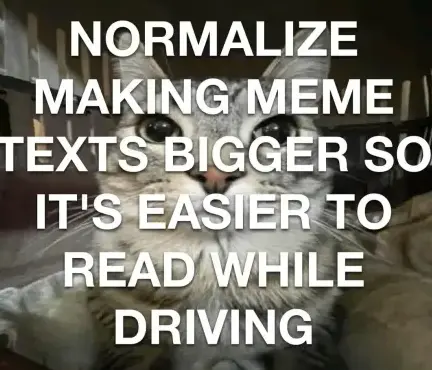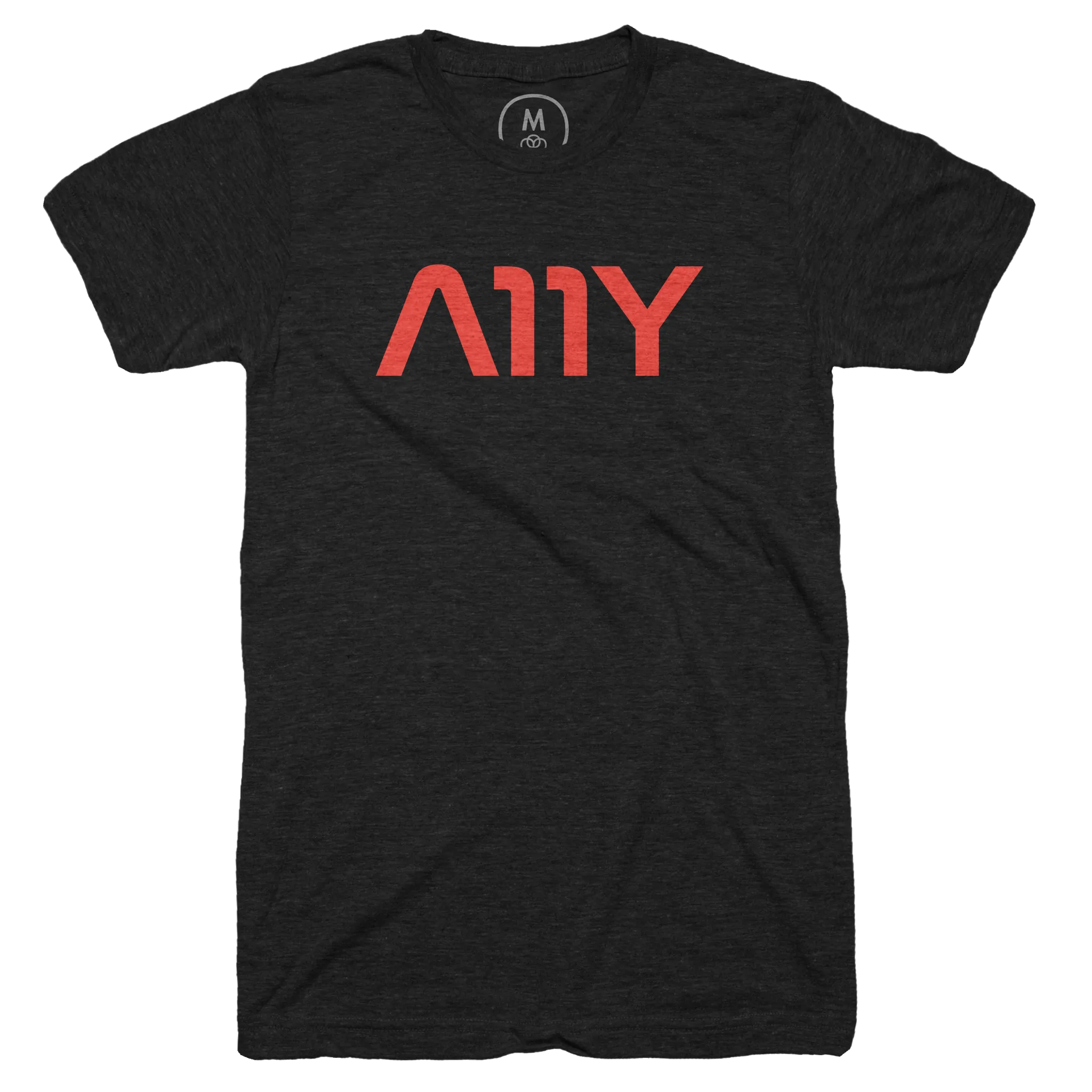Search results
Rearranged and expanded quite a bit the design principles page on the wiki: https://yalter.github.io/niri/Development%3A-Design-Principles.html
Give it a read if you're curious about my thinking process about various niri behaviors and such
Implemented basic AccessKit integration for niri based on @DataTrinyArnold Loubriat's proof-of-concept. I have little experience with screen readers, and also had several questions, so I would appreciate more eyes and testing on the PR:
Gathering thoughts on reconciling communities between Matrix and Discord: https://github.com/YaLTeR/niri/discussions/2069
This is a problem I expect we'll face reasonably soon, so if you have some ideas please write in the discussion!
About finished implementing org.fd.a11y.KeyboardMonitor in niri, necessary for correct screen reader function:
https://github.com/YaLTeR/niri/pull/2060
I tested it with Orca more or less, seems to work, but I'm very new to screen reader workings, so it's possible I've missed something.
This makes Orca announce keys everywhere in niri, and makes grabs work (both modifier with double-press passthrough and keystrokes). Making Orca actually say niri dialogs will be a separate effort.
Update on ext-workspace:
- sfwbar fixed all outstanding issues!
- the waybar ext-workspace PR also fixed all issues!
- quickshell impl is on the way
Out of curiosity, I tried running Orca on niri, and apparently it sort-of works for some apps (I expected nothing to work at all; idk anything about screen readers). However, compared to GNOME Shell, there's quite a few missing or broken things. I documented what I found here: https://github.com/YaLTeR/niri/issues/1904
Is there some "Integrating Orca to Wayland desktops" docs? Like, what the compositor needs to do, who handles the hotkeys and how, etc.
(not actively working on this, just curious)
Oh hey, come work with me!
We're seeking an earlier-career front-end dev who is able to work in-office (multiple US locations).
Check it out if you have interest and experience in: #designsystems #CSS #a11y #webcomponents
https://adobe.design/jobs/job-posts/prototyping-and-engineering/r163198-design-engineer
You Can't Opt-Out of Accessibility by ![]() @vale https://lobste.rs/s/rqub7y #a11y
@vale https://lobste.rs/s/rqub7y #a11y
https://vale.rocks/posts/accessibility-importance
A rant in the face of the industry’s continued neglect and outright hostility towards digital accessibility and care for users.
Top 5 #accessibility improvements in #GNOME Calendar 49:
1. Focus indicators were added in various places
2. Events are focusable with a keyboard
3. Year/month spin buttons are navigable with arrow keys
4. Calendar grids are skippable with Tab, and cells are wrapped via keyboard focus
5. Calendar list box now behaves like a check box
For screen readers: events and year/month spin buttons have proper semantics!
Let us settle things once, and all: Tabs or spaces?
![]() @nixCraftnixCraft 🐧 tabs are for indentation, spaces are for alignment. This is an #a11y thing. Don't @ me..
@nixCraftnixCraft 🐧 tabs are for indentation, spaces are for alignment. This is an #a11y thing. Don't @ me..
A interesting little story from HTMHell about how much little details matter for accessibility.
Announcing Vojtux - Accessible Linux distro which is almost pure Fedora via ![]() @lproven https://lobste.rs/s/w5j6io #a11y #linux
@lproven https://lobste.rs/s/w5j6io #a11y #linux
https://www.freelists.org/post/orca/Announcing-Vojtux-Accessible-Linux-distro-which-is-almost-pure-Fedora
Jubilant: Python subprocess and Go codegen https://lobste.rs/s/2nbzsq #a11y #go #python
https://benhoyt.com/writings/jubilant/
The <time> element should actually do something https://lobste.rs/s/hrmr9m #a11y #web
https://nolanlawson.com/2025/12/14/the-time-element-should-actually-do-something/
Hey, I've been under distress lately due to personal circumstances that are outside my control. I can't find a permanent job that allows me to function, I'm not eligible for government benefits, my grant proposals got rejected, paid internships are quite difficult to find. Essentially, I have no stable monthly income that allows me to sustain myself.
Nowadays, I work mostly on accessibility throughout GNOME as a volunteer, improving the experience of people with disabilities. I helped make the majority of GNOME Calendar accessible with a keyboard and screen reader — still an ongoing effort with !564 and !598 —which is an effort no company ever contributed financially. These merge requests take thousands (literally) of hours to research, develop, and test, which would have been enough to sustain myself for a couple of years if I had been working under a salary.
I would really appreciate any kinds of donations, especially ones that happen periodically to bump my monthly income.
These donations will allow me to sustain myself while allowing me to continue working on accessibility throughout GNOME, potentially even 'crowdfunding' development without doing it on the behalf of the Foundation.
I accept donations through the following platforms:
- “TheEvilSkeleton” on Liberapay: https://liberapay.com/TheEvilSkeleton/donate (free and open-source platform)
- “TheEvilSkeleton” on Ko-fi: https://ko-fi.com/theevilskeleton
- “TheEvilSkeleton” on GitHub Sponsors: https://github.com/sponsors/TheEvilSkeleton
Boosts welcome and appreciated.
#Accessibility #a11y #GNOME #GNOMECalendar #MutualAidRequest #MutualAid

GNOME Calendar: A New Era of Accessibility Achieved in 90 Days
There is no calendaring app that I love more than GNOME Calendar. The design is slick, it works extremely well, it is touchpad friendly, and best of all, the community around it is just full of wonderful developers, designers, and contributors worth collaborating with, especially with the recent community growth and engagement over the past few years. Georges Stavracas and Jeff Fortin Tam are some of the best maintainers I have ever worked with. I cannot express how thankful I am of Jeff’s underappreciated superhuman capabilities to voluntarily coordinate huge initiatives and issue trackers. One of Jeff’s many initiatives is gnome-calendar#1036: the accessibility initiative, which is a big and detailed list of issues related to accessibility. In my opinion, GNOME Calendar’s biggest problem was the lack of accessibility support, which made the app completely unusable for people exclusively using a keyboard, or people relying on assistive technologies. This article will explain in details about the fundamental issues that held back accessibility in GNOME Calendar since the very beginning of its existence (12 years at a minimum), the progress we have made with accessibility as well as our thought process in achieving it, and the now and future of accessibility in GNOME Calendar.
tesk.page · TheEvilSkeleton
Link author: ![]() TheEvilSkeleton@TheEvilSkeleton@treehouse.systems
TheEvilSkeleton@TheEvilSkeleton@treehouse.systems
Today's Web Design Update: https://groups.google.com/a/d.umn.edu/g/webdev/c/A-d9lIVaj2c
Featuring ![]() @michaelharshbarger,
@michaelharshbarger, ![]() @aardrianAdrian Roselli,
@aardrianAdrian Roselli, ![]() @SteveFaulkner,
@SteveFaulkner, ![]() @deconspray,
@deconspray, ![]() @mgiffordMike Gifford, CPWA ,
@mgiffordMike Gifford, CPWA , ![]() @sarajwSara Joy
@sarajwSara Joy  ,
, ![]() @matuzoManuel Matuzović,
@matuzoManuel Matuzović, ![]() @j9tJens Oliver Meiert,
@j9tJens Oliver Meiert, ![]() @mehm8128,
@mehm8128, ![]() @Jayhoffmann,
@Jayhoffmann, ![]() @MeyerwebEric A. Meyer,
@MeyerwebEric A. Meyer, ![]() @bkardell,
@bkardell, ![]() @adactioJeremy Keith,
@adactioJeremy Keith, ![]() @slightlyoffAlex Russell, and more.
@slightlyoffAlex Russell, and more.
Subscribe info: https://www.d.umn.edu/itss/training/online/webdesign/webdev_listserv.html#subscribe
At the November 2025 TPAC event, Kevin White, W3C Senior Principal Accessibility Specialist, gave an overview of W3C accessibility work over the past year, covering key groups like the Accessibility Guidelines, ARIA, APA, and WAI Interest Group. Highlights include updates to WCAG 2 and WCAG 3 drafts, ACT Rules, WCAG2ICT, test suites, and resources. Future work includes WCAG 3 publication, accessibility for AI, and spoken presentation specs.
#w3cTPAC #a11y https://www.youtube.com/watch?v=PPHLyPJfqLs
Introduction to lgbtqia.space
I figured I would do an #introduction:
Hi, I'm bupu!
I am a queer PhD student in Tiohtià:ke/ Montreal interested in #DesignResearch.
My research will be exploring #DIY making (#Arduino, soft circuits, #wearables, etc.), #MentalHealth, with the #2SLGBTQ community.
I am also interested in #a11y & #DisabilityJustice.
I also do research and play in #embroidery, #quilting, and digital sketching.
I speak English & French. I can read Spanish, and know basic Vietnamese.
I acknowledge that the pandemic is still very much happening. I wear a KN95 or higher in all indoor public spaces and crowded outdoor spaces, use air purifiers wherever possible, and I respect others' mitigation strategies!
I believe in #CommunityCare and would say I am a dark optimist. Despite everything, I somehow manage to hold on to hope and work from a place of trying to make the world better through my own actions and research.
This year brought great improvements to #accessibility in GNOME, including:
• Accessibility from the start on the login screen
• Full accessibility of GNOME Web
• Tons of improvements to Calendar
• Screen reader integration for Notifications
• Configure #Orca screen reader from Settings
• GTK apps integrated w/Windows & macOS accessibility
Help us reach 1,500 #FriendsOfGNOME so we can focus on accessibility even more in 2026!
424-word hot take: “You Can’t Make Something Accessible to Everyone”
https://adrianroselli.com/2025/12/you-cant-make-something-accessible-to-everyone.html
Why you should #support W3C? We work to support the community that develops web standards, the building blocks of our digitally connected world.
Show you care about the long-term growth of the open, interoperable web that caters for accessibility, privacy, security, and internationalization. #Donate today https://www.w3.org/support-us/
#GivingTuesday #a11y #i18n #privacy #security #openweb #training
Finally hit publish on a blog post I've been writing for a while.
It's common to hear the term "fully accessible" used to describe products which have passed WCAG 2.2 level AA. But, are they really?
In this post, I explore 5 examples which highlight why WCAG, as awesome as it is, is not a measure of great usability or performance.
At last, all the accessibility improvements on GNOME Calendar are finally available as a stable release. Get it on Flathub while it's hot!!!
https://flathub.org/en/apps/org.gnome.Calendar
#Accessibility #GNOME #GTK #GTK4 #libadwaita #a11y #calendar #GNOMECalendar #Linux #GNU #OpenSource #FOSS #FreeSoftware #OSS

GNOME Calendar: A New Era of Accessibility Achieved in 90 Days
There is no calendaring app that I love more than GNOME Calendar. The design is slick, it works extremely well, it is touchpad friendly, and best of all, the community around it is just full of wonderful developers, designers, and contributors worth collaborating with, especially with the recent community growth and engagement over the past few years. Georges Stavracas and Jeff Fortin Tam are some of the best maintainers I have ever worked with. I cannot express how thankful I am of Jeff’s underappreciated superhuman capabilities to voluntarily coordinate huge initiatives and issue trackers. One of Jeff’s many initiatives is gnome-calendar#1036: the accessibility initiative, which is a big and detailed list of issues related to accessibility. In my opinion, GNOME Calendar’s biggest problem was the lack of accessibility support, which made the app completely unusable for people exclusively using a keyboard, or people relying on assistive technologies. This article will explain in details about the fundamental issues that held back accessibility in GNOME Calendar since the very beginning of its existence (12 years at a minimum), the progress we have made with accessibility as well as our thought process in achieving it, and the now and future of accessibility in GNOME Calendar.
tesk.page · TheEvilSkeleton
Link author: ![]() TheEvilSkeleton@TheEvilSkeleton@treehouse.systems
TheEvilSkeleton@TheEvilSkeleton@treehouse.systems
After two long and painful years, several design iterations, and more than 50 rebases later, we finally merged the infamous, trauma-inducing merge request !362 on GNOME Calendar.
The calendars list in the quick-add popover has undergone accessibility improvements, providing a better experience for assistive technologies and keyboard users (to a limited extent). Specifically: tabbing from outside the list will focus the selected calendar in the list; tabbing from inside the list will skip the entire list; arrow keys automatically select the focused calendar; and finally, assistive technologies now inform the user of the checked/selected state.
Admittedly, the quick-add popover is currently unreachable via keyboard because we lack the resources to implement keyboard focus for month and week cells. We are currently trying to address this issue in merge request !564, and hope to get it merged for GNOME 50, but it's a significant undertaking for a single unpaid developer. If it is not too much trouble, I would really appreciate some donations, to keep me motivated to improve accessibility throughout GNOME and sustain myself: https://tesk.page/#donate
For non-accessibility-related details about this merge request, feel free to check out https://mastodon.social/@nekohayo/115571375702642784
#GNOMECalendar #GNOME #GTK4 #libadwaita #accessibility #a11y #calendar #FOSS #OpenSource
Exploring the Fragmentation of Wayland, an xdotool adventure https://lobste.rs/s/gtbhhc #a11y #graphics #linux
https://www.semicomplete.com/blog/xdotool-and-exploring-wayland-fragmentation/
some people work hard to try and solve real barriers to #accessibility
others like to waste everybody's energy with pointlessly long-winded theoretical purity discussions on "if text isn't marked up in a <p> element, does it fail 1.3.1?"
i guess if you're being paid by numbers of issues filed, sure... #a11y
"Is my app accessible? Where do I start making it better?"
These are the first two questions I've been getting from my clients, and they want the answers right away. That's why I'm now offering a new service called the "accessibility checkup" to give you those answer is two business days or less. Same great report you've seen earlier https://drive.google.com/file/d/19rSHKlSe7ww9aqvxNWXpgRAHs2goxgjE/view
delivered to you fast.
Sound like something you or your team would be interested in? Let me know!
#introduction Longtime computer geek. Newly working in digital accessibility #a11y, after desktop/API server development, desktop support & sysadminning. I still enjoy #geekingOut, #Lego and our pets (mammals, reptiles). Endurance motor racing, especially #FIAWEC and my annual attempt at a 24 hour marathon for the 24 Hours of Le Mans (#LM24).
I'm learning about the implications of late life #Autism Spectrum Disorder (#ASD) and Attention Deficit/Hyperactivity Disorder (#ADHD).
Guess I never posted or pinned an #introduction if I had one. I've been on Mastodon for a bit now, since 2019 if my profile is to be believed. I'm _really_ bad at social media in general but am a fan of the vibes and federation of Mastodon and other AP offerings.
Former frontend > full stack dev now living the #DevOps life. Currently located in America pushing for change. I believe in #privacy and #digitalsovereignty.
More in bio.
Finally got a chance to read ![]() @sundressAlice Boxhall's thoughtful post outlining the "Why" behind the state of accessibility on the web and it is spot on! If you haven't already, please give it a read: https://alice.boxhall.au/articles/a-threat-model-for-accessibility-on-the-web/.
@sundressAlice Boxhall's thoughtful post outlining the "Why" behind the state of accessibility on the web and it is spot on! If you haven't already, please give it a read: https://alice.boxhall.au/articles/a-threat-model-for-accessibility-on-the-web/.
The ![]() @w3cWorld Wide Web Consortium breakouts schedule is now available! They will take place from 10 to 13 November 2025. Check it out:
@w3cWorld Wide Web Consortium breakouts schedule is now available! They will take place from 10 to 13 November 2025. Check it out:
▶️ https://www.w3.org/calendar/tpac2025/breakout-sessions/
#w3cTPAC participants organize discussions among the full W3C #community about new or existing topics. This year, a total of 79 proposals were proposed, including topics like #AI Agents,, #security, #payments, #a11y, #HumanRights, and more: https://github.com/w3c/tpac2025-breakouts/issues
Common misconceptions about screen readers: "Screen readers are familiar to many in digital, but how they work in practice can be less clear. In this post, we shed some light on the topic." #a11y https://tetralogical.com/blog/2025/10/14/common-misconceptions-about-screen-readers/
State of Terminal Emulators in 2025: The Errant Champions · Articles https://lobste.rs/s/flln5g #a11y
https://www.jeffquast.com/post/state-of-terminal-emulation-2025/
I geeked out a bit too much on these accessibility audits 🫣 Want to see what one looks like? https://drive.google.com/file/d/19rSHKlSe7ww9aqvxNWXpgRAHs2goxgjE/view Let me know if you want me to look at your app, too! #iOS #Android #Accessibility #A11y
This is why nobody should ever try and vibe code a screen reader. Do not listen to the blind people that think this is a good idea. They are wrong. https://sightlessscribbles.com/posts/20250902/ #AI #AIHype #Accessibility #A11y
Crunchyroll is destroying its subtitles for no good reason https://lobste.rs/s/gbnrii #a11y
https://daiz.moe/crunchyroll-is-destroying-its-subtitles-for-no-good-reason/
Adding Customizable Frame Contrast to KDE Plasma by ![]() @aksAkseli
@aksAkseli 
 https://lobste.rs/s/sd6ska #a11y
https://lobste.rs/s/sd6ska #a11y
https://akselmo.dev/posts/frame-contrast-settings/
Building like it's 1984: Scrollbars in web applications via ![]() @RunxiYu https://lobste.rs/s/pbsq49 #a11y #web
@RunxiYu https://lobste.rs/s/pbsq49 #a11y #web
https://web.archive.org/web/20250110081649/https://height.app/blog/scrollbars-in-web-applications
#OpenAI, #ARIA, and #SEO: Making the Web Worse
https://adrianroselli.com/2025/10/openai-aria-and-seo-making-the-web-worse.html
#A11Y #AI ![]() @davidgerard
@davidgerard
NEW ACCESSIBILITY SHIRT!
A11Y is going to space!
If you saw my tees at #a11yTOConf and wondered where you could squander money on them…
The POURP shirt:
https://aardrian.threadless.com/designs/pourpn-atkinson-hyperlegible-white-text/mens/t-shirt/classic
The W*C*A*G shirt (brown version):
https://aardrian.threadless.com/designs/w-c-a-g/mens/t-shirt/classic
I see people are again blaming screen readers when being politely asked to maybe use fewer emoji and Unicode characters as decoration. Too easy to blame something you don’t understand than to be considerate.
https://adrianroselli.com/2021/10/blaming-screen-readers-red-flag.html
#accessibility #a11y
Today is the Global Accessibility Awareness Day - and so Apple sat down with me to talk about how I build truly accessible apps. 🦾
The interview is now live on the *front page* of the App Store 🥹
HTML dialog: Getting accessibility and UX right https://lobste.rs/s/8kguwk #a11y #design #web
https://jaredcunha.com/blog/html-dialog-getting-accessibility-and-ux-right
For those who wanted to see the code behind my CSS-only magical sticky auto-expanding sidebar nav in action, I've put together a little CodePen for you! I've narrowed down the relevant code to just what's needed to get this to work, with some very minimal JavaScript to improve the accessibility of it! I've even left you a little challenge in there for you, let me see how you accomplish it!
#css #html #javascript #webdev #a11y
https://codepen.io/Snugug/pen/VYezVKr
https://mas.to/@snugug/115259058092836805

